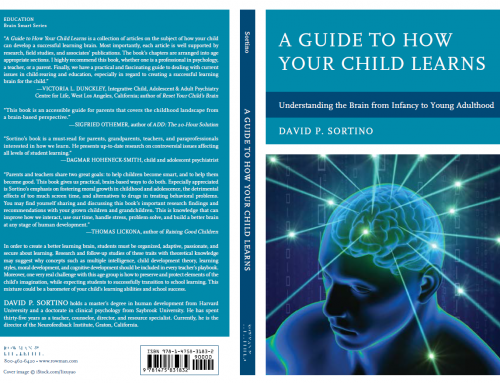Teachers and child therapists are acutely aware of the effect divorce and/or broken homes can have on the child’s learning potential as well as school behavior.
In fact, teachers can generally predict an evolving divorce based on observation of the student’s school performance. Although children experience divorce and separation differently, the one constant that should be addressed are the child’s feelings of abandonment, mistrust and/or symptoms that define the emotions of an attachment disorder, factors that also seriously affect school learning.
According to researchers, divorce affects secure attachments, which can have a negative impact on behavior in childhood and throughout the life of a child.
For example, children diagnosed with oppositional-defiant disorder (ODD), conduct disorder (CD) or post-traumatic stress disorder (PTSD) frequently display attachment disorders (trust), due to abuse, neglect or trauma, all of which can be caused by separation or divorce.
A study by Ainsworth (1978) called “The Strange Situation” might offer some clues about the effect divorce and separation can have on children’s school learning.
The study involved observing children between the ages of 12 to 18 months responding to a situation in which they were briefly left alone and then reunited with their parent. One group of infants called securely attached exhibited distress when separated from their parents, but were happy when the parent returned. Although the child was distressed at separation, when the parent left his child, the child in this group felt he was able to depend on his mother or felt assured that the parent would return. The children in this group are defined as securely attached.
In short, such children knew the parent would provide comfort and reassurance, so they felt comfortable seeking them out in times of need. There was a sense of predictability or expectation that securely attached infants exhibited.
In brain development terms, when the child experiences a sense of predictability, the experience stimulates the prefrontal cortex, the seat of organization and social intelligence, a necessary ingredient for school and life success.
Another infant group defined as ambivalent attachment became very distressed when the parents left. This attachment style suggests that ambivalent attachment is a result of poor maternal availability.
These children cannot depend on their mother to be there when the child is in need. Again, we can see the need for predictability but also the need for kinesthetic stimulation or the need of maternal touch or bonding. To stimulate the child’s kinesthetic intelligence or sensory and motor brain areas in a school environment (cerebellum), parents might need to turn to a school directed toward the child’s kinesthetic intelligence.
For example, Montessori recognized this need when she developed a school curriculum for orphaned children who had severe attachment disorders. Her curriculum centered on stimulating the sensory motor brain areas which attempts to duplicate the feelings of maternal touch or bonding (see H. Harlow’s study) which could eliminate the feeling of ambivalence.
The third group was defined as Avoidant Attachment and demonstrated a need to avoid parents or caregivers.
When offered a choice, these children showed little or no inclination between a parent and a complete stranger. Research suggests that this attachment style might be the result of abusive or neglectful parents. Children who are punished for relying on a parent will learn to avoid seeking help in the future.
The avoidant attachment type could be the most serious attachment of disorders because they mistrust and fear relationships, which runs counter to higher order learning and/or thinking. In order to facilitate a positive school performance, such children might need to connect the academics (skill development) artistically as well as kinesthetically. Art centered schools (Waldorf) integrate multiple sensory stimulation with the academics and could help avoidant attachment children deal with mistrust and a lack of bonding.
Bottom line, all children need support to learn successfully, especially children who divorce and separate from their learning potential and intelligence.
Dr. David Sortino, a psychologist and current Director of Educational Strategies, a private consulting company catering to teachers, parents, students. To contact Dr. Sortino, e-mail davidsortino@comcast or on his blog: Dr. David Sortino.


